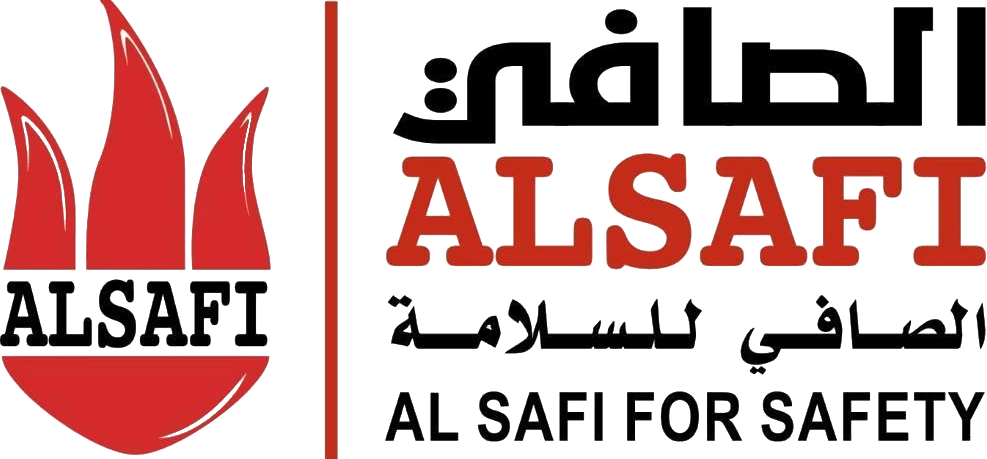Methods of Installing Fire Pipes and Their Different Types

Fire pipes are a fundamental component of fire protection networks. Their main function is to transport various firefighting materials—whether water, foam, or gas—from their sources to the fire suppression devices installed in the area of the fire. Installing fire pipes is an essential step in safety and protection systems within modern buildings, as they help deliver water efficiently and quickly to the fire site, reducing losses and protecting both lives and property.
With the development of firefighting systems, adhering to the installation of fire pipes according to approved standards has become a legal and engineering requirement enforced by Civil Defense regulations in the Kingdom. In this article, we will explain the details of fire pipes and their installation methods.
Importance of Fire Pipes
Fire pipes are special pipes used in fire protection systems to convey firefighting devices such as water, extinguishing gases, and foam to the fire zones for suppression.
These pipes are usually made from materials resistant to corrosion and heat and are connected to control systems and sensors to detect fires and manage the flow and distribution of extinguishing materials effectively.
Fire pipes are typically painted red to distinguish them from regular water or drainage pipes for building personnel.
The materials used for these pipes vary according to several factors evaluated by specialists when designing fire networks to determine the most suitable type for each system.
Types of Fire Pipes
Fire pipes differ based on the materials they transport and their construction. Here are the main types:
-
Metal Fire Pipes
Metal fire pipes are among the most common types. They are durable, strong, and ideal for high-pressure fire zones and harsh conditions. They are typically made from:
- Galvanized steel
- Cast iron
- Copper
- Stainless steel
-
Plastic Fire Pipes
Plastic fire pipes are made from materials like polypropylene (PP) and polyvinyl chloride (PVC). They are lightweight, easy to install, and provide good resistance to leakage and corrosion.
How to Install Fire Pipes
Installing fire pipes requires proper tools and technical knowledge. The general steps are:
- Identify areas that require fire pipes and select the appropriate pipe types and materials.
- Cut pipes to the required lengths using a pipe cutter or saw.
- Remove sharp edges and smooth the pipe ends using appropriate tools.
- Install pipe supports (clamps) on walls or ceilings as per design.
- Fix the pipes onto supports securely and connect them to other distribution points using appropriate joints and fittings.
- Install sprinklers and valves according to design and manufacturer instructions.
- Test the system by filling it with water and opening valves to check for leaks and ensure proper operation.
- Install control and alarm devices, such as early warning devices, sensors, and control units.
Methods for Connecting Pipes
Fire pipes can be connected using several methods:
- Threaded connections: Used for pipes with diameters larger than 2 inches, with Teflon applied to prevent leaks.
- Flanged connections: Suitable for pipes larger than 2.5 inches.
- Welding: The most commonly used method.
Fire Pipe Installation Prices
When planning an effective fire protection system, knowing the installation costs of fire pipes is essential for proper budgeting. Al Safi Fire Systems offers competitive prices for this service.
Prices vary based on pipe type, system complexity, and site size. Investing in high-quality fire pipe installation ensures the safety of your facility and its occupants, and Al Safi guarantees high-quality work compliant with Saudi safety standards.
Make Al Safi your trusted partner for installing high-quality fire pipes at the best possible prices.
Why Choose Al Safi for Fire Pipe Installation?
- Al Safi is a leading company in fire safety and firefighting, providing high-quality fire pipe installation with a specialized, experienced engineering team for large projects.
- The company uses certified, high-quality fire pipes to ensure safety and efficiency, catering to industrial, commercial, and residential facilities with the latest technologies.
- Contact us now via WhatsApp to get the best fire pipe installation services at competitive prices.
Proper fire pipe installation is crucial for protecting facilities against potential disasters. Hiring a trusted, specialized company ensures compliance with precise engineering standards, maximizing safety and minimizing fire damage.
Frequently Asked Questions about Fire Pipe Installation
Why is installing fire pipes important in buildings?
Fire pipes are essential for safety systems, delivering water quickly to fire locations, facilitating firefighting, and minimizing potential damage.
Is fire pipe installation required in all buildings?
Fire pipes are required in industrial, commercial, and multi-story buildings per Civil Defense codes, but may not be mandatory in small residential buildings.
Is periodic maintenance required for fire pipes?
Yes, periodic maintenance ensures fire pipes are safe, leak-free, and that water tanks and pumps operate efficiently.
What factors determine the cost of fire pipe installation?
Factors include pipe type, system type, building size, number of floors, and local safety code requirements.



